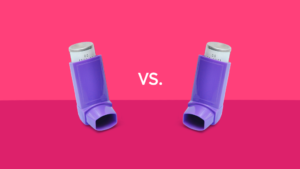What’s the Maximum Dosage of Mounjaro for Type 2 Diabetes?
HOME | DIABETES EDUCATION | WHAT IS THE HIGHEST DOSAGE OF MOUNJARO IN TYPE 2 DIABETES?
The highest dosage of Mounjaro (tirzepatide) for Type 2 Diabetes management is 15 mg weekly. This peak dose is utilized in treatment plans to optimize blood glucose control while minimizing adverse effects.
Clinical guidance and patient experiences play a significant role in determining this dosing decision.
Key Takeaways
- The maximum dosage of Mounjaro for Type 2 Diabetes is 15 mg weekly.
- Dosage adjustments occur in 2.5 mg increments, focusing on patient tolerance and glycemic response.
- Collaboration with healthcare providers is essential for optimal dosage adjustments and managing interactions.
- Proper storage at 36 to 46 degrees Fahrenheit is crucial for maintaining Mounjaro’s effectiveness.
Mounjaro Dosage Overview; What is The Highest Dosage of Mounjaro?
The maximum dosage of Mounjaro for Type 2 Diabetes patients is 15 mg once per week. The initial dosage starts at 2.5 mg weekly. Thereafter, dosage adjustments are made in 2.5 mg increments every 4 weeks, based on the patient’s response and tolerance to the medication.
Collaborative consultation with a healthcare provider is crucial for optimal dosage adjustments, taking into account the patient’s health status and contraindications. The ultimate goal is to achieve and maintain the best possible glycemic control.
Starting Mounjaro Dosage
The starting dose for Type 2 Diabetes treatment with Mounjaro is 2.5 mg via subcutaneous injection once a week. The initial dosage of this medication aims to limit adverse effects while evaluating the individual’s response. Mounjaro’s role in glucose regulation mandates a meticulous approach to dose initiation and adjustment.
Managing Type 2 Diabetes necessitates a well-planned Mounjaro dosage regimen. The initial dosage establishes a therapeutic baseline for making incremental adjustments based on the patient’s glycemic control response and drug tolerance.
Here’s a simplified table outlining the Mounjaro treatment initiation:
| Week | Dosage (mg) | Administration |
|---|---|---|
| 1-4 | 2.5 | Subcutaneous Injection |
| 5-8 | 5.0* | Subcutaneous Injection |
| 9+ | Incremental Adjustments* | Subcutaneous Injection |
*Subject to individual response and subsequent sections.
The dosage begins at 2.5 mg once a week, then potentially rises to 5 mg, depending on the patient’s response and tolerance. This methodical regimen allows for careful monitoring of the drug’s efficacy and side effects, ensuring personalized treatment. The process underscores the need for precise, analytical treatment in managing Type 2 Diabetes with Mounjaro.
Dosage Increase Schedule When Using Mounjaro
The dosage increase schedule for Mounjaro in Type 2 Diabetes treatment includes:
Starting Dose: Begin with a 2.5 mg weekly dose. This lays the groundwork for gradual dosage increases, reducing potential adverse reactions.
First Increase: After 4 weeks, raise the dosage to 5 mg weekly. This step allows assessment of patient response and adjustment based on glycemic control and tolerability.
Further Adjustments: Recommend dose increases of 2.5 mg every 4 weeks, closely watching patient response and glycemic measures. This slow progression enables customized treatment adjustments.
Peak Dosage: The ultimate Mounjaro dose for Type 2 Diabetes is 15 mg weekly. Reaching this level requires a careful titration process, personalized to the individual’s response and glycemic control needs.
Maximum Dosage Explained for Type 2 Diabetes
The maximum dose of Mounjaro for Type 2 Diabetes is 15 mg per week. This is reached through a gradual increase, starting from an initial dose of 2.5 mg per week.
The dose is typically increased by 2.5 mg every 4 weeks, based on the patient’s response and glycemic control. This careful incrementation allows for close monitoring of the patient’s condition and necessary adjustments to the treatment.
To ensure optimal therapeutic outcomes and minimize adverse effects, patients should communicate with their healthcare provider about their experience with Mounjaro.
The 15 mg weekly dosage represents a tailored approach to Type 2 Diabetes management, prioritizing individual needs and outcomes.
Dosage Adjustments for Mounjaro Injection (Tirzepatide)
Mounjaro injection (Tirzepatide) dosage adjustments are vital for effective Type 2 Diabetes treatment. The process balances optimal glycemic control and side effect minimization. Here are the guidelines:
Starting Dosage: Treatment begins at 2.5 mg once weekly, minimizing gastrointestinal side effects and acclimating the body to the medication.
Incremental Increases: Dosages can increase by 2.5 mg every 4 weeks. This slow escalation allows for patient tolerance and medication response evaluation.
Individualizing Dosing: Dosing can be personalized based on patient response and glycemic control, enhancing therapeutic outcomes.
Maximum Dosage: The upper dosage limit is 15 mg once weekly, dependent on patient tolerability and response.
Healthcare providers monitor patient responses and adjust dosages as needed. This collaboration between patients and providers ensures optimal outcomes while adhering to maximum dosage guidelines.
Missing a Dose of Mounjaro Pen
If a dose of Mounjaro Pen, a Type 2 Diabetes treatment, is missed, it should be injected as soon as possible within 4 days of the missed day. This is crucial to maintain effective blood glucose management.
After taking a missed dose, the next dose should be on the regular schedule. It is important to not inject two doses within a 3-day period to avoid the risk of side effects from overdosing.
If multiple doses are missed, contact a healthcare provider for advice. These steps ensure the safety and effectiveness of Mounjaro treatment for diabetes.
Changing Injection Days and Injection Site
Understanding the implications of altering injection days and sites is crucial for effective Type 2 Diabetes management with Mounjaro. Here’s how these factors impact the treatment:
Consistent Weekly Schedule: Keeping a stable weekly injection schedule ensures optimal drug effectiveness by maintaining steady drug levels in the body. Any sudden or irregular changes can negatively affect drug efficacy and patient outcomes.
Regular Rotation of Injection Sites: Rotating injection sites between the stomach, thigh, and upper arm helps prevent tissue damage and promotes even medication absorption, enhancing therapeutic efficacy.
Healthcare Provider Consultation: Changes to the injection schedule or site should be made post consultation with a healthcare provider to ensure patient safety and treatment effectiveness.
Adherence to Prescribed Dosage and Frequency: Injecting Mounjaro no more than once a week is crucial for maintaining the prescribed dosage regimen and achieving the desired therapeutic outcomes.
There is not one injection site better than the others. The exceptions are if there are active injuries, major scarring, or another reason a doctor determines a site cannot be used for Mounjaro injections. In these cases, there are alternative mounjaro injection sites such as the buttocks.
https://www.allureesthetic.com/blog/is-it-better-to-inject-mounjaro-in-the-stomach-or-thigh/#:
Overdose Guidelines When Taking Mounjaro
Overdose of Mounjaro, a Type 2 Diabetes treatment, above the maximum dosage of 15 mg weekly may cause severe nausea, hypoglycemia, dizziness, and confusion. It’s vital to stick to the prescribed dosage and be aware of these symptoms. If they occur, seek immediate medical help.
Key factors in managing potential overdose include recognizing symptoms (severe nausea, hypoglycemia, dizziness, and confusion), taking immediate action (seeking medical help), prevention (following storage and dosing guidelines), and awareness of complications (possible pancreatitis and low blood sugar signs).
The dosage of Mounjaro should be gradually increased to a maximum of 15 mg weekly to prevent overdose. By strictly following the dosing regimen, patients can effectively manage their Type 2 Diabetes and reduce the risk of adverse effects. Storing the medication properly and out of reach also helps prevent accidental overdosing.
Saving on Mounjaro Dose
To save on Mounjaro medication for Type 2 Diabetes:
Initial Dosage and Incremental Increase: Begin with the recommended 2.5 mg weekly dose and increase as instructed by your healthcare provider. This method ensures safety, efficacy, and spreads costs over time.
GoodRx Coupons: Use GoodRx to find free Mounjaro coupons. This platform provides significant savings by comparing pharmacy prices, thus reducing your out-of-pocket expenses.
Price Comparison: Compare Mounjaro prices across pharmacies. Significant price differences exist, and choosing a cheaper provider can lead to substantial long-term savings.
Healthcare Consultation: Regularly consult with healthcare providers. Their expert advice can guide dosage increases and manage medication interactions, maintaining effective and cost-efficient treatment, and avoiding cost-inflating adjustments.
Drug Interactions
Mounjaro, a medication for Type 2 Diabetes, can interact with other drugs such as insulin and sulfonylureas. These interactions may require dosage adjustments and careful management.
At its highest weekly dosage of 15 mg, Mounjaro can increase the risk of hypoglycemia, particularly when used with insulin or sulfonylureas. These drugs, often used in Type 2 Diabetes treatment, can exacerbate hypoglycemic episodes. Thus, changes to Mounjaro dosage may necessitate modifications to these medicines’ dosages as well to keep glucose levels safe.
Healthcare professionals and pharmacists are key in managing these interactions and ensuring individual therapeutic needs are met. They educate patients on hypoglycemia signs and the need for regular monitoring.
Regular blood glucose level assessments, patient symptom feedback, and therapeutic regimen adjustments based on clinical response and tolerance are crucial for safe and effective Mounjaro use in Type 2 Diabetes treatment. This comprehensive approach maximizes Mounjaro benefits while minimizing adverse drug interaction risks.
Storage Instructions
Mounjaro, a medication for Type 2 Diabetes, needs to be stored at temperatures between 36 to 46 degrees Fahrenheit and shielded from sunlight to maintain its therapeutic potency and stability. These conditions are vital to prevent degradation and ensure effective blood sugar management.
The storage instructions for Mounjaro are as follows:
Temperature Control: Mounjaro injectable pens must be kept in a 36 to 46 degrees Fahrenheit range. Extreme temperatures can impair the medication’s efficacy.
Sunlight Protection: Mounjaro should be kept in its original packaging to avoid direct sunlight exposure, which can destabilize it.
No Freezing: Freezing Mounjaro could irreversibly alter its molecular structure, rendering it ineffective.
Cool, Dark Location: Mounjaro should be stored in a cool, dark place, distant from heat and light sources to prevent degradation.
Following these storage guidelines is critical for patients to gain the full benefit of Mounjaro’s dosage regimen for Type 2 Diabetes management.
Final Considerations
The top dosage of Mounjaro for Type 2 Diabetes is 15 mg weekly. Deciding to increase to this level requires a review of the patient’s treatment response, the trade-off between effectiveness and safety, and the aim of improved glycemic control. Dosage changes, including the increase to the 15 mg weekly dose, should be executed under strict medical supervision to lessen potential dangers and ensure the best results for Type 2 Diabetes patients.
| Factor | Importance | Consideration |
|---|---|---|
| Glycemic Control | High | Modify Mounjaro dosage according to blood glucose levels and HbA1c targets. |
| Patient Response | Crucial | Observe for effectiveness and side effects, modify dosage as required. |
| Medical Supervision | Essential | Rely on healthcare provider for safe dosage increase and individualized dosing. |
| Safety Profile | Prime | Evaluate patient’s total health and potential contraindications. |
| Lifestyle Factors | Significant | Merge patient’s diet and exercise routine into treatment strategy. |
Frequently Asked Questions
Can Lifestyle Changes Impact the Effectiveness of Mounjaro at Its Highest Dosage for Type 2 Diabetes Management?
Mounjaro’s effectiveness, at its peak 15 mg weekly dosage for Type 2 Diabetes, is significantly impacted by lifestyle alterations. Specifically, the inclusion of a balanced diet and regular exercise can amplify treatment results and diabetes regulation.
How Does the Efficacy of Mounjaro’s Highest Dosage Compare to Other GLP-1 Receptor Agonists in Controlling Blood Sugar Levels in Type 2 Diabetes Patients?
Clinical studies show that Mounjaro’s highest dosage effectively controls blood sugar in Type 2 Diabetes patients, often outperforming other GLP-1 receptor agonists. It’s a significant entity for glycemic management.
Are There Any Long-Term Health Implications of Using the Maximum Dosage of Mounjaro for Extended Periods?
Current studies suggest that using maximum dosages of Mounjaro long-term has a good safety profile. However, ongoing research and monitoring are crucial to comprehend the full impact of its prolonged use in managing Type 2 Diabetes.
How Do Patients Typically Respond to the Titration Process up to the Maximum Dose in Terms of Side Effects and Tolerability?
The patient’s responses to Mounjaro titration process fluctuate, exhibiting individual differences in side effects and tolerability. Supervision by health specialists is crucial for managing adverse reactions and ensuring optimal therapeutic results.
Can the Highest Dosage of Mounjaro Be Used in Combination With Insulin or Other Diabetes Medications for More Aggressive Type 2 Diabetes Management Strategies?
The highest dosage of Mounjaro can be used in conjunction with insulin or other diabetes medications for more aggressive Type 2 diabetes management. This strategy requires thorough clinical assessment and expert supervision.



